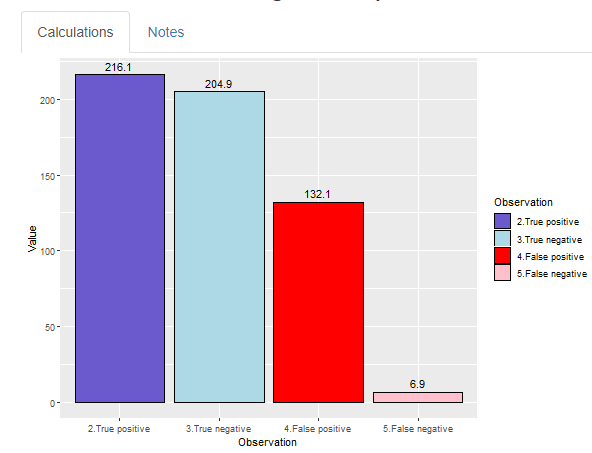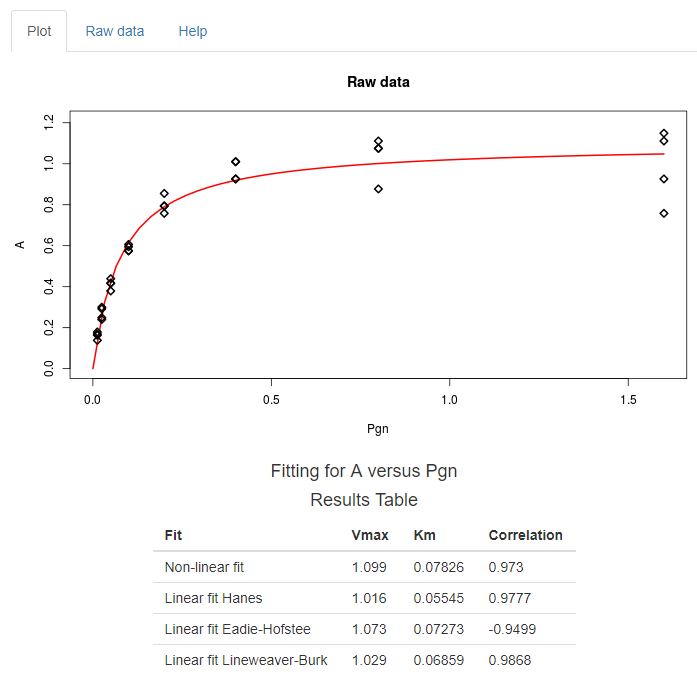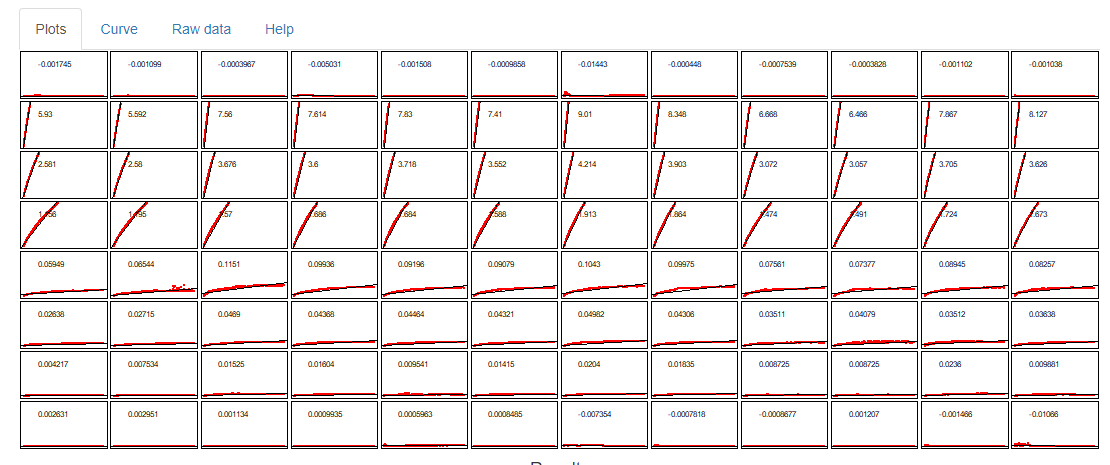Welcome to my GitHub Pages

This site contains links to my Shiny apps that deal with biochemical analysis, particularly in relation to haemostasis and the clotting and lysis of fibrin.
The apps are written using the Shiny package for R to help standardise methods and promote reproducible analysis. Further details are published in the Journal of Thrombosis and Haemostasis
Select a brief description of an app or follow the link to use the app online
Clot lysis
This app was designed to facilitate the analysis of fibrin clotting and lysis curves.
The output from a set of clot lysis curves is shown here, along with the results for the time to 50% clot lysis. The app makes it easy to extract selected parameters from these curves, such as time to a chosen % lysis, maximum absorbance, area under the curve, etc.
Options are provided for baseline selection and curve fitting to facilitate reproducible, high throughput analysis
This is a link to the online app, please try it out ClotlysisCL_2019
Detailed help notes are available here
There is an updated simplified app available to analyse clot lysis curves. There are fewer options for manipulating the curves but the app can handle awkward data better, including empty wells or noisy responses.
Please try it out: Simple_Clotlysis
Return to top
Clotting curves or fibrinolysis halo assays
Absorbance curves from assays where fibrinogen or plasma is clotted in microtitre plates are analysed using this app. The app is a modified version of the Clotlysis app, without the lysis phase. Fibrinolysis can also be explored using halo assays, which were recently developed as an optical method that uses whole blood to measure fibrin clot breakdown. A ‘halo’ blood clot is formed around the edge of a microtitre plate well and a thrombolytic enzyme is added in solution to the well. In both clotting and halo methods, an increasing absorbance is observed to a maximum and the time to 50% change can be conveniently used to measure enzyme activity on the chosen substrate. Other options may also be selected.

Detailed help notes are available here
There is an updated simplified app available to analyse clotting curves. There are fewer options for manipulating the curves but the app can handle awkward data better, including empty wells or noisy responses.
Please try it out: Simple_clotting
Return to top
Zymogen activation, for example plasminogen activation assays
Clotting and fibrinolysis cascades involve zymogen activation reactions, which are often studied in isolation. For example reaction mixtures of enzyme (e.g. streptokinase), substrate (e.g. plasminogen) and chromogenic substrate that is sensitive to the generated plasmin. The rate of plasmin generation (in other words the activity of streptokinase) can be derived from plots of chromogenic substrate hydroloysis versus time squared. This app makes these calculations easy to perform.
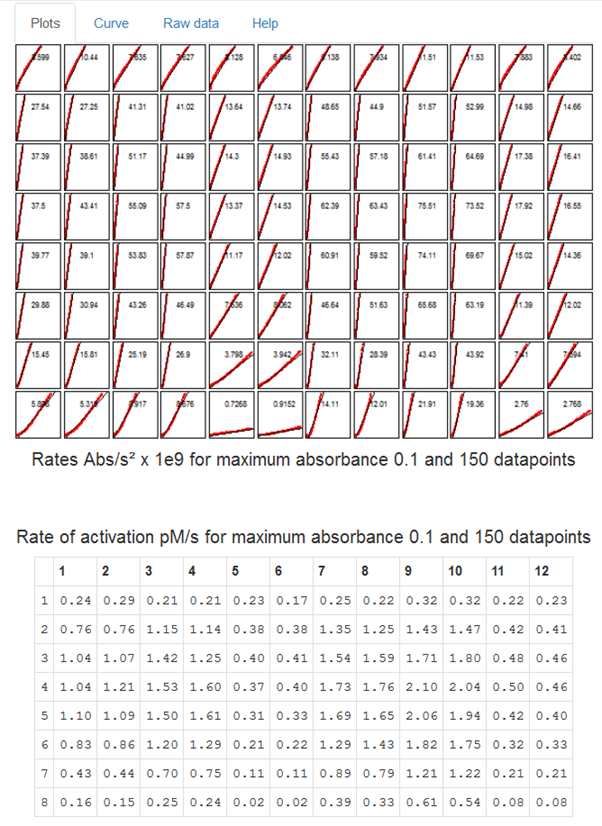
The app can be used to calculate rates of simple chromogenic substrate hydrolysis, rates of absorbance versus time squared, or by providing a few parameters, the rate of zymogen activation in pM/s
Detailed help notes are available here
Return to top
Thrombin generation
This app is similar to the clot lysis app but raw fluorescence data and calibrator data are loaded and the app performs the necessary calculations to generate thrombin generation curves with or without corrections for substrate depletion and inner filter effect, or thrombin-alpha-2-macroglobulin contribution.
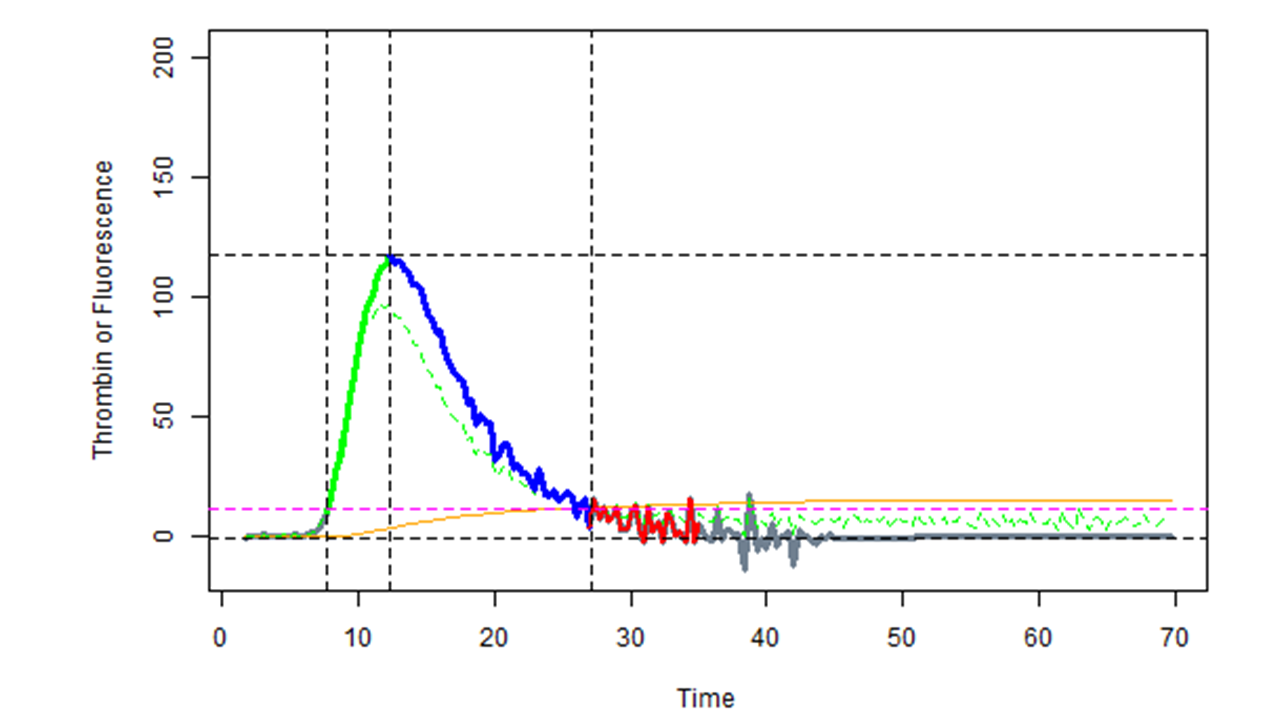
Detailed help notes are available here
Return to top
Screening tests and false positives, for example with D-dimer assays
This app was designed to help understand how sensitivity, specificity and prevalence affect rates of true/false positive and negative results in screening tests. It uses some published numbers from D-dimer testing, but is useful for all kinds of screening tests. The Notes tab covers some other possible applications.
There is a related app that deals with Covid-19 testing and includes additional notes and results from population studies on antibody testing.
Return to top
Michaelis Menten kinetics and linear transformations
This app analyses Michaelis Menten curves by non-linear regression and compares results for various common linear transformations (Lineweaver-Burk, Eadie-Hofstee, etc). The linear transformations are not recommended to derive Km and Vmax values but may be useful to identify non-standard kinetics.
Return to top
Binding curves and Scatchard plots
This app is useful for analysing ligand binding isotherms and performing Scatchard transformations. It also helps optimise experiments as the app will generate binding curves from supplied Kd values and concentration ranges. There is an option to use total added ligand or free ligand to see what effect this has on the binding curve and derived values. Sometimes non-standard binding behaviour is mis-identified because the experimentor plots bound and added ligand rather than bound and free ligand.
Return to top
Prekallikrein activator contamination in albumin or immunoglobulins
Prekallikrein activator (PKA) is a contaminant in therapeutic albumin solutions and can be measured in a zymogen activation assay where PKA acts on a substrate (PKS) to generate kallikrein, which hydrolyses a chromogenic substrate. This app has more options that the zymogen activation app above because it allows the user to automatically subtract absorbance from wells without PKS from test wells with PKS. This step removes the contribution of pre-existing kallikrein, which is not of interest.
This is how the plate looks with background subtraction from the top half of the plate
Detailed help notes are available here
Return to top
Covid screening tests
This app is adapted from the screening app described above but contains some data from the work on Covid-19 screening studies. The problem of test accuracy and disease prevalance is highlighted again. Screening studies are often performed to find the prevalence of Covid-19 using PCR or antigen tests, or to find the numbers of people previously infected using antibody tests. However, some idea of prevalence, as well as test sensitivity and specificity, are needed in order to interpret test results. How these factors affect false negative and false positive results can be explored using this app.
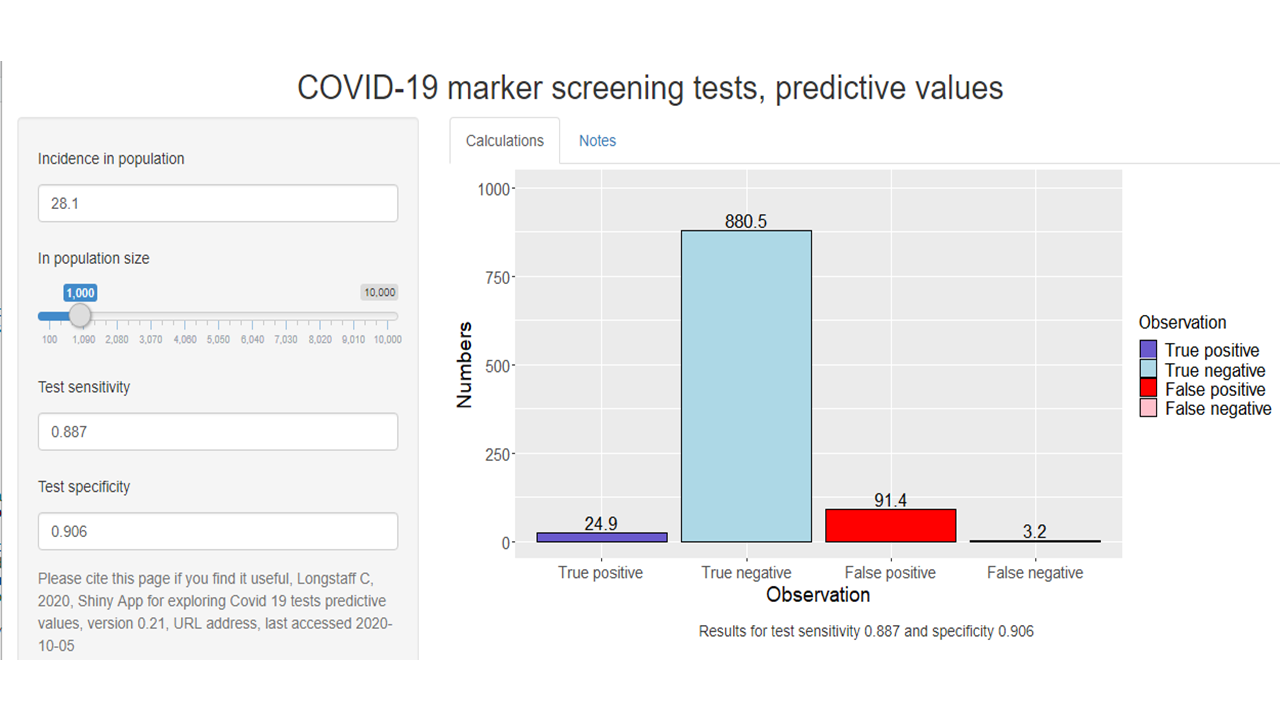
Covid baseline selection for excess deaths
Excess deaths are said to be a reliable indicator of the scale of the Covid-19 pandemic as they avoid questions around diagnosis. However, excess has to be counted above a baseline and selection of the year or years for the baseline affects the overall excess calculated. In this app data have been taken from the Office of National Statistics for England and Wales for deaths by month from 2010-2020. Baseline deaths were calculated using the mean deaths for each month for 10 years (2010-2019) or 5 years (2015-2019) or for each individual year. The influence of these selections is shown in the figure for overall excess in 2020. The graphical output on the plots tab can be shown as a dodged or stacked bar plot. Dodged is useful as it shows how different the deaths are for each month. The first 10 weeks of the mean deaths for 2010-2019 are seen to be the best fit for the first 10 weeks of 2020 and are a suitable baseline choice.
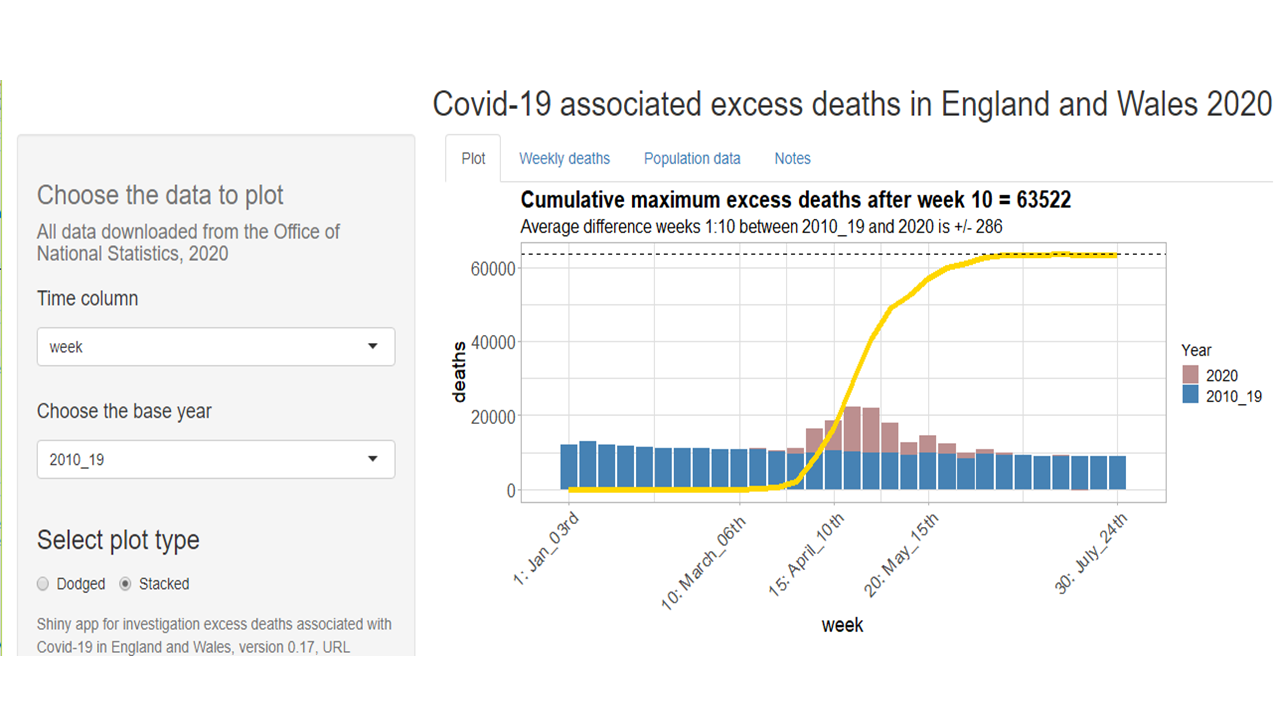
Covid deaths by country and region in the first wave, spring 2020
This app allows data for different countries and regions to be analysed to compare excess deaths. All data present (downloaded from the Financial Times) pre-2020 for each country were used to calculate baseline expected deaths for each month. However, these data do not include the same time period for every country. Available years and calculated results are presented in the deaths data tabs. The plot tab shows deaths for each month over a whole year for the baseline and for first wave data for 2020. Selection of the start and end of the Covid peak (grey box on the plot) influences the calculation of overall excess deaths. Some observations and a summary table are presented in the Help notes tab.

Covid comparing deaths and cases in the UK and other countries
This app uses data from Our World in Data and opens with UK daily and cumulative deaths. The same results for a second country, selected from the dropdown menu, are overlaid on the UK data. The second country can be filtered by continent. Tabs are also available to show the latest results for daily cases and daily deaths. Column charts are generated for best and worst overall deaths, or daily cases, for the selected continent in the appropriate tabs.

Online app is here Return to top

